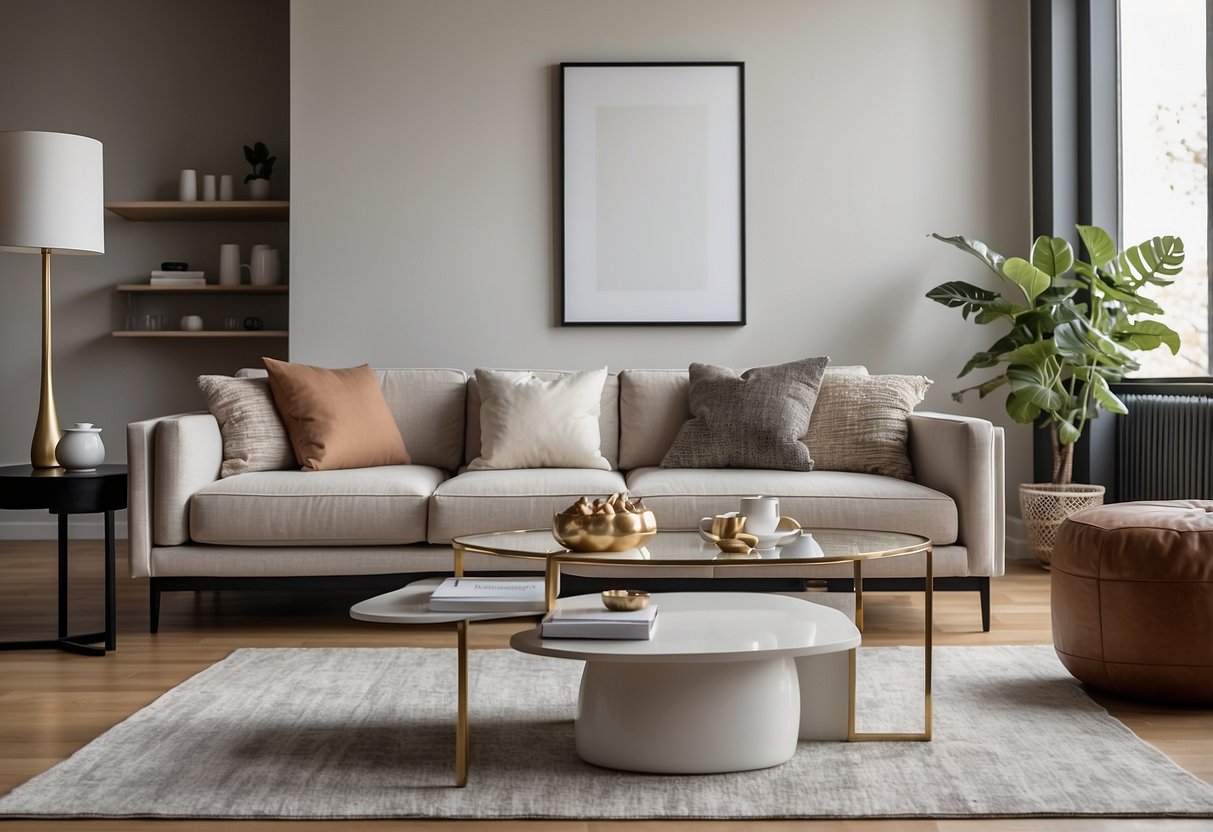Mastering the Art of Minimalist Home Decor: Tips for a Clean, Chic Space
Essential Furniture Selection

Selecting the right furniture is crucial for achieving a minimalist aesthetic. It’s important to focus on pieces that are both functional and stylish, while also choosing items that will stand the test of time.
Selecting Timeless Pieces
Timeless furniture pieces are key to maintaining a minimalist home decor. Opt for items with clean lines, neutral colors, and classic designs. These features ensure that the furniture will continue to look good for years to come. Material quality is paramount; look for solid wood, durable fabrics, and simple yet elegant finishes.
Vintage furniture can also be a good choice because it often features high-quality craftsmanship. Additionally, these pieces usually have a unique charm that mass-produced items lack. Avoid overly trendy items that may quickly go out of style and clash with the minimalist aesthetic.
Investing in well-made, versatile pieces has long-term benefits. A simple yet comfortable sofa, a sturdy dining table, and a well-designed bed frame are essential. These items serve as the foundation of the decor and offer flexibility for future adjustments.
Balancing Function and Style
Balancing function and style is essential in minimalist furniture selection. Choose multifunctional pieces that can serve multiple purposes without sacrificing visual appeal. For example, a sofa bed can provide both seating and sleeping space, making it perfect for smaller homes or apartments.
Storage solutions should be stylish yet practical. Closed storage options like cabinets and drawers help keep clutter out of sight, maintaining the clean and organized look. Opt for furniture that offers built-in storage, such as coffee tables with drawers or beds with storage compartments.
Comfort should not be compromised for style. Ergonomically designed chairs, cozy sofas, and supportive mattresses ensure that the space remains livable and inviting. Prioritize items that fulfill both aesthetic and practical needs to create a harmonious and functional minimalist environment.
Accentuating with Decor
Creating a minimalist home does not mean completely avoiding decorative elements. The right accents can add character and warmth to a space. Focus on details like textures and personal touches to make the decor feel intentional yet unobtrusive.
Using Textures to Add Depth
Textures play a significant role in minimalist decor, offering visual interest without overwhelming the space. Mixing different materials such as wood, metal, and fabric can create layers of depth. For instance, a woven rug can contrast beautifully with a sleek, wooden coffee table.
Textures can be integrated through soft furnishings like cushions and throws. Choose items with simple patterns or solid colors to maintain a minimalist aesthetic. Subtle variations in texture will enhance the room without adding clutter.
Natural materials are especially effective. Stone, bamboo, and linen introduce an organic feel, promoting a calm and serene atmosphere. These choices help to ground the space in natural beauty, further emphasizing simplicity and elegance.
Incorporating Art and Personal Touches
Minimalist decor thrives when it includes art and personal items that have meaning. Select pieces of art that resonate personally or reflect the overall color scheme of the room. This ensures that the art complements the space rather than dominating it.
Photographs, sculptures, and even books can serve as tasteful decor. Displaying a small collection of favorite items on a shelf can make the room feel more lived-in and warm. The key is to keep the display curated and uncluttered.
Art should also be strategically placed. A single large piece on a main wall can serve as a focal point, drawing the eye and adding interest without overcrowding the space. Opt for frames that are simple and match the room’s color palette to maintain cohesion.



